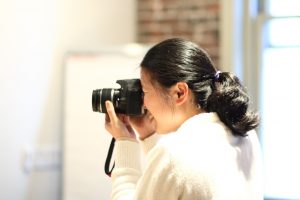Photographing your HMO rooms!
When your HMO is completely ready and fully dressed, set aside some time (or pay a professional) to take a full series of photographs, detailing all aspects of the HMO. Effective property photography involves a little planning, time and applying the right techniques to get the best results. Photos should sell your listing and help to create a story. They need to show the property in the best light and appeal enough to get tenants to visit in person. Here are some common mistakes to avoid, plus ways to fix them to ensure your listing stands out from the competition. Here are ten tips to ensure that your photos show your property off as aesthetically as possible.
is completely ready and fully dressed, set aside some time (or pay a professional) to take a full series of photographs, detailing all aspects of the HMO. Effective property photography involves a little planning, time and applying the right techniques to get the best results. Photos should sell your listing and help to create a story. They need to show the property in the best light and appeal enough to get tenants to visit in person. Here are some common mistakes to avoid, plus ways to fix them to ensure your listing stands out from the competition. Here are ten tips to ensure that your photos show your property off as aesthetically as possible.
- Use a DSLR camera. The biggest error many agents and landlords make is using poor quality images. Especially with low-cost listings, many agents think it is acceptable to use grainy images, which often results in room voids. Property advertising requires high quality images. Smartphones and basic point and shoot cameras just don’t provide this. To get the images required for effective marketing, you need to use a DSLR camera. Research shows that listings shot with a DSLR camera gain more interest faster than those that were not. Learning how to take your own photos isn’t hard, it requires the correct equipment, some practice and knowing basic techniques to get started.
- Attach your camera to a tripod. Hand held cameras are great for taking spur of the moment pictures, but a tripod will give you the stability to take clearer, sharper photographs.
- Switch on all the house lights. Even during the day, having all the lights on in the property will instantly make it look warmer and more appealing. Switch on all bedside lights, draw back and straighten curtains and blinds, and turn on any ensuite lighting. Lighting makes a huge difference to the appeal of an image. If there isn’t enough light then the photo will appear dark and grainy, too much light and the image will be over-exposed, reducing the amount of detail visible.
- Avoid reflections. There is nothing more unprofessional then flicking through images of a listing and seeing a reflection of someone in a bathroom. All good photographers have the skills to avoid getting their reflection in a shot and this also includes the reflection of a flash and the camera. Try using different angles in a room that has reflective surfaces, like kitchens and bathrooms, to reduce the chances of getting caught in the photo. Sometimes it isn’t possible to completely avoid a reflection, especially in small, tight spaces. All you need to do is take your photo as normal, then use an image editing service to remove the unwanted reflection. Sometimes it’s impossible to avoid catching your reflection in an image. Another suggestion is to set up the shot using the self-timer on your camera, then step out of the room.
- Use lighting equipment. Dark corners don’t do an HMO any favours online, and simple lighting equipment will help you illuminate them. A flash will help, as will a reflector and even a light stand.
- Use a bubble spirit level. To prevent your pictures looking wonky, use a bubble spirit level to ensure your camera is perfectly angled for each room.
- Take exterior shots in the morning. Getting up a dawn isn’t everyone’s idea of fun, but it’s the ideal time of day to get the best photographs of the outside of a property: dawn light is better and there are fewer people around. Watch how the light hits the property. At different times of the day, and at different times of year, the light will change how the house looks.
- Process the images. Processing helps to soften, sharpen and generally tidy up any imperfections. Using online tools you can sharpen, blur, soften and lighten shots, adding to the quality. Be selective in the images you use, and only include those that show the good features of the property. All the images used should tell a story and add value to the property – you want to show off as many features as possible in the most appealing way
- Take a photography course. If you plan to take your own photos and know your skills are not up to scratch, there are photography courses run at adult education centres all over the country, and are the best place to start learning about taking better pictures.
- Use the services of a professional photographer. Good quality photos can make the difference between your rooms renting quickly or not. With a one-time investment in professional photographs, you can re-use them each time you come to let the property. Even if your agent offers to take photos, I would still recommend you take a series of your own. Then you can decide which ones are of a higher quality for advertising purposes.
For more fabulous tips please come along to one of our brand new ‘Get To Know HMO’ events – see the website for more details:
www.hmosuccess.co.uk